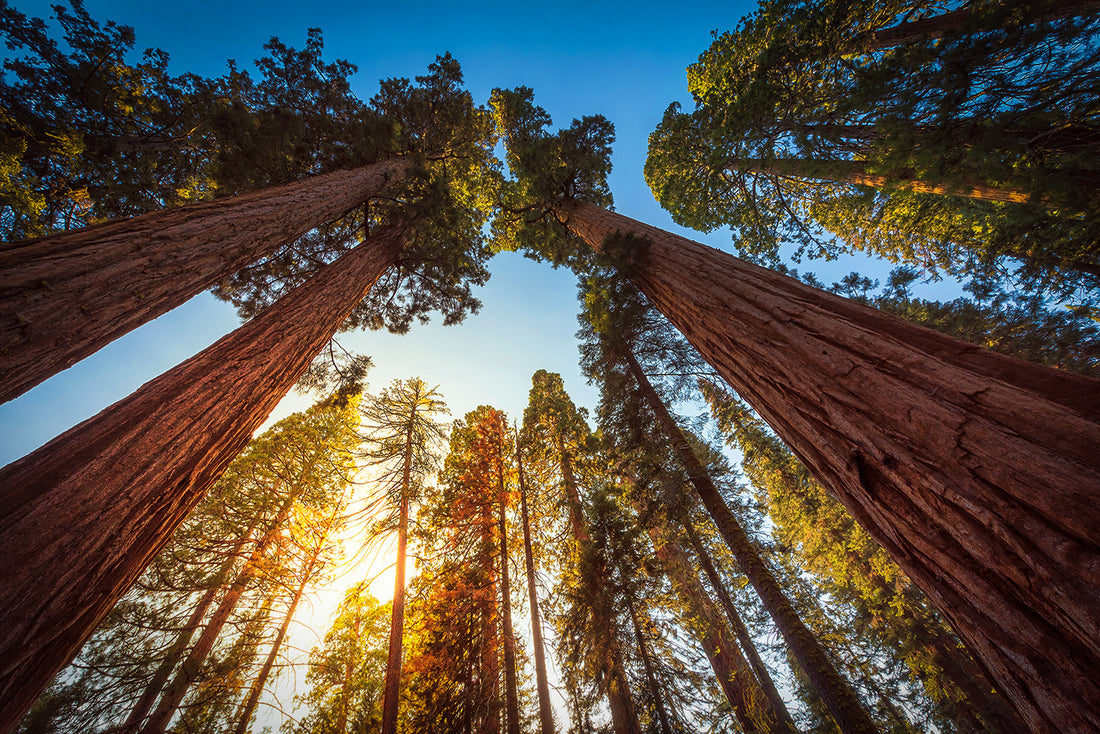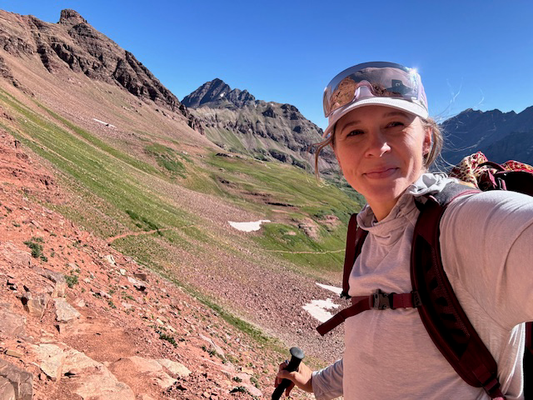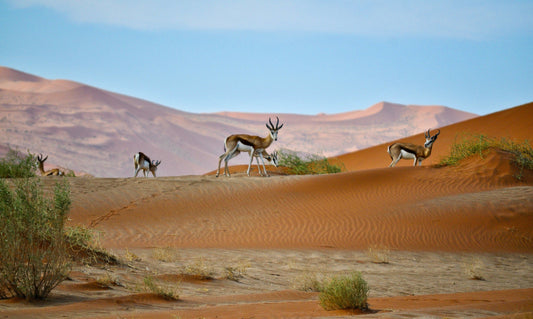When I first visited the grove of giant Sequoias named after my family—dedicated to my great-great-grandfather for preserving the park nearly 100 years ago—I was astonished by these living giants, and there’s never been a more important time to support our country’s wild places than now. The towering forests are awe-inspiring enough to overwhelm even the most seasoned traveler, making this California oasis the perfect destination to find your unknown.
Sincerest apologies to Big Sur and Carmel, but as far as I’m concerned, most truly awe-inspiring wilderness destination in California is found in the southern mountains of Sierra Nevada. Walking beneath the giant trees of Sequoia National Park is an experience both majestic, and—ultimately—humbling. Unlike the skyscrapers of New York City or Dubai, we can’t take credit for their staggering heights. Staring up the trunks towards the canopies of leaves hidden in the clouds, you feel an appreciation for their immortality and their immunity to the passing of time. Realizing how many generations of Americans have stood in their shadows—from Native American tribes, to European settlers, to frontiersmen—you can’t help but feel connected to the past.
For me, this connection is personal as well: a grove of trees is named in honor of my family by my great-great-grandfather, James Parker, who was superintendent of the park from 1893 to 1894. When I first visited, I was overwhelmed by what I saw—the trees were so high you could barely see the sky. They seemed indestructible, but yet it simultaneously seems impossible they have yet to be struck down by natural disaster or cut down by our selfish use of the earth.
Over one hundred years later, my great-great-grandfather’s preservation cause is more important than ever, as preservation efforts have been hindered by federal policies endangering these national landmarks. Given the volatility of both the political and the environmental climate, there’s never been a better time to visit and support Sequoia National Park. So pack your gear and travel accessories and start your trek! Read on for your agenda for the best hikes, sites, and vistas to visit in this summer while exploring the iconic American wilderness.
The Giant Forest
For the oldest and tallest Sequoias, head to the Giant Forest, home to five of the ten largest trees in the world. Walking along, you can barely climb atop the roots, dug deep into the Californian soil. It took 3,266 years for The General Sherman Tree to grow to 275 feet tall and 102 feet wide, and weigh 2.7 million pounds—by volume, the largest tree in the world. Take the Sherman Tree Trail, an easy 0.8 miles (1.3 kilometers), to explore this area, which feels preserved in time. Check out the Giant Forest Museum while visiting to learn more.
Speaking of American history, if you’re so inclined and itching for a detour, follow the Generals Highway from the Giant Forest to Kings Canyon National Parkto witness another giant Sequoia named after an iconic American military figure: The General Grant Tree, located, naturally, in Grant Grove.
The Parker Group
Of course, I’d be remiss not to feature The Parker Group, located only 2.6 miles (4.2 kilometers) away from Giant Forest Village. Family bias aside, the trees are among the most majestic in the park, with eight towering sequoias growing nearly atop one another in the grove Their roots appear interconnected, which is fitting, since Parker named the eight trees after his generation of siblings. A wooden sign commemorates his service to this day, and there is a picture of my siblings and me as a child in front of this historic achievement looking largely undignified. As the latest generation, we appear in various states of emotional and physical disarray: one of us is crying, another is wielding a stick in the air, and so on. May your photo-ops be more successful than ours were.
Meadows & Canyons
Though this park is known for its elevation, the flatland is equally gorgeous— the western approach to the park takes you through the gorgeous San Joaquin Valley, while the gorgeous Crescent Meadow was deemed the “gem of the Sierras” by famed conservationist John Muir. Another dramatic landmark is Moro Rock, a 400-step stairway on the National Register of Historic Places: the climb is worth it simply for the Instagram. Speaking of social media-ready backdrops, the Tunnel Log is also not to be missed: the 275-foot fallen tree is perfect for photo-ops (and for recognizing the scale of these giants). Finally, for some incredible views, check out South Fork Canyonand Tokopah Canyon—the latter will appeal most for travelers interested in chasing waterfalls. Hike the 1.7-mile (2.7-kilometer) trail to the 1,200-foot waterfall in Tokopah Canyon, Tokopah Falls. Visit in summertime for the most dramatic cascade.
The Pacific Coast Trail
Finally, if the easy hikes I’ve listed haven’t been challenging enough, recreate your own (much abbreviated) version of Cheryl Strayed’s journey in her memoir, Wild, and trek along the Pacific Coast Trail. Yes, the famous Pacific Coast Trail does wind its way through the Sierra Nevadas of Sequoia National Park, so you can follow in Strayed’s footsteps for a portion of her journey—but with a much lighter pack. Maybe you’ll even find yourself, just like she did.
Eagle Creek’s Find Your Unknown Tour will be passing through Sequoia National Park August 16 – 20! Follow our Instagram for more details.
Related Links (from Eagle Creek blog):
6 Surprising Activities You Can Do in U.S. National Parks
Road Trip California: Take a Coastal Drive Up Highway 1
Best Campsites and Campgrounds in America
The 5 Best Day Hikes Along the Pacific Crest Trail







































